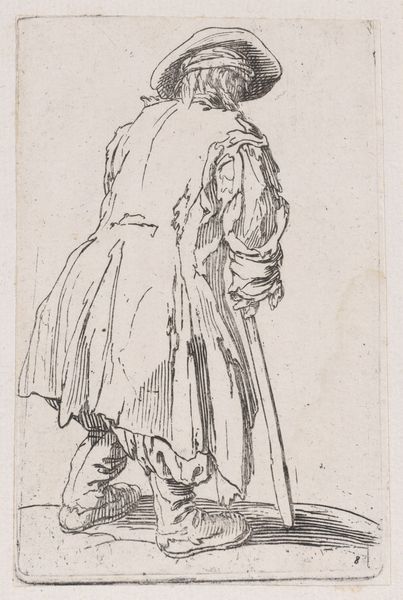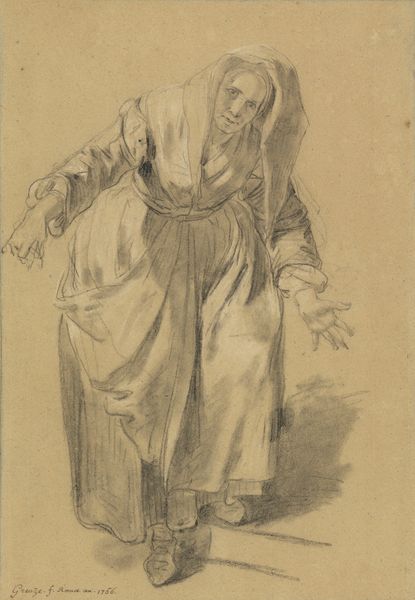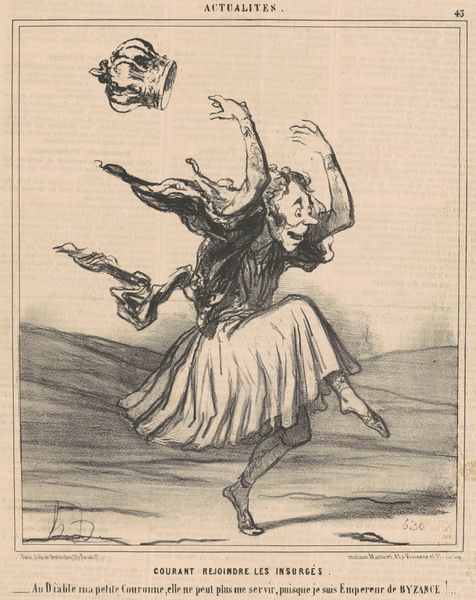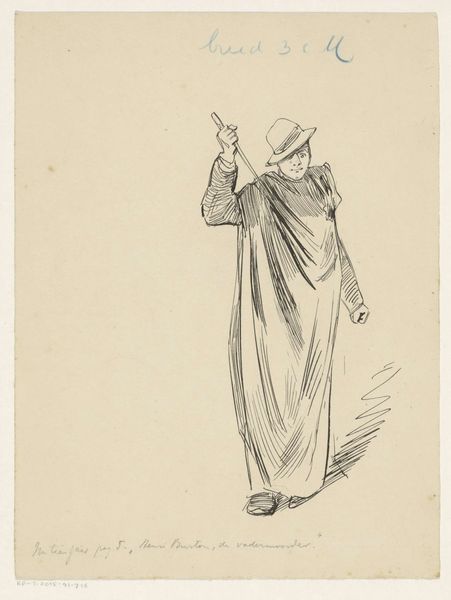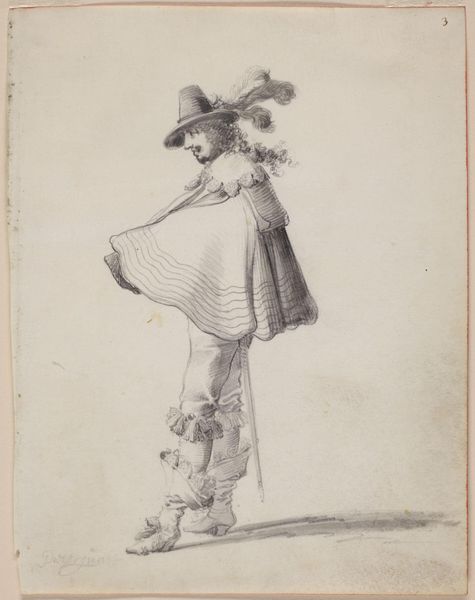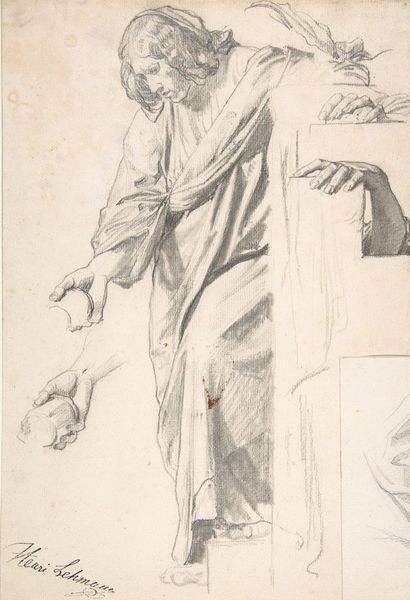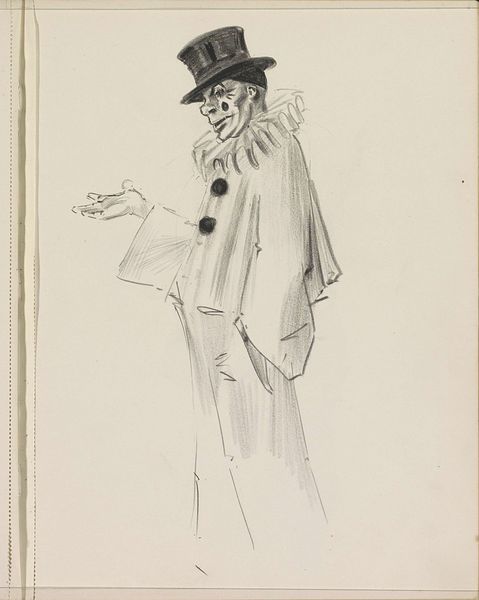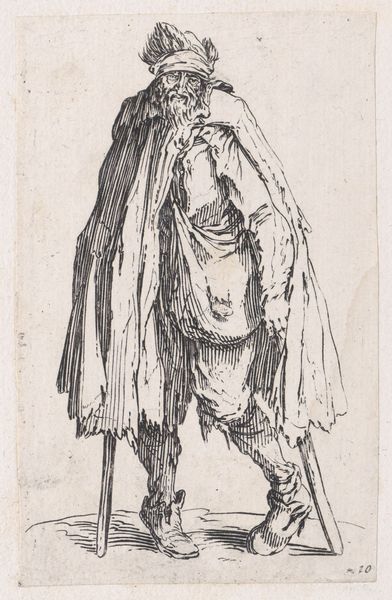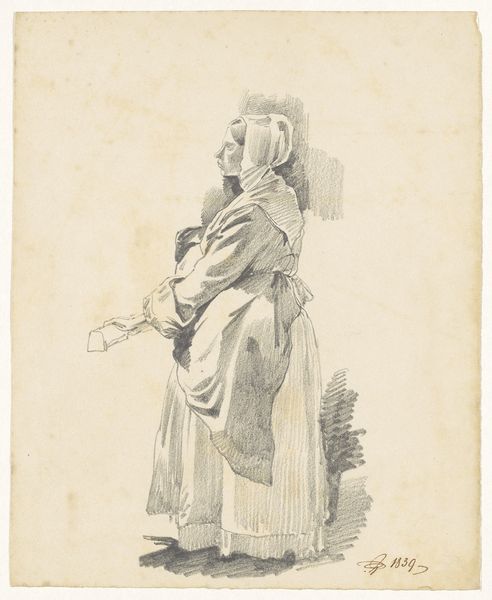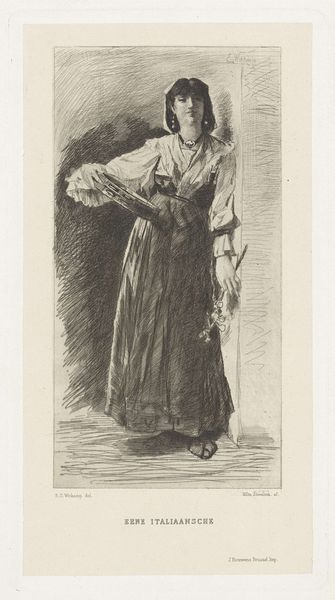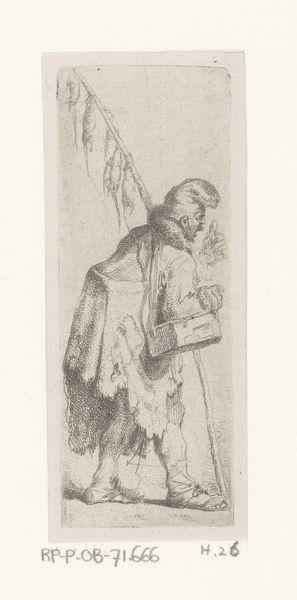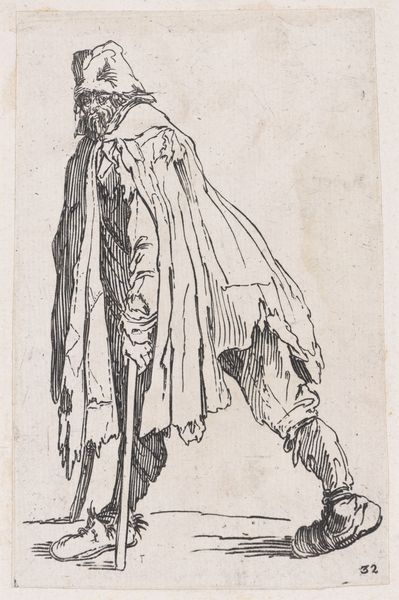
drawing, pencil
#
portrait
#
pencil drawn
#
drawing
#
narrative-art
#
charcoal drawing
#
figuration
#
pencil drawing
#
pencil
#
portrait drawing
#
modernism
Copyright: Rijks Museum: Open Domain
Curator: This drawing by Otto Verhagen, made around 1917 to 1919, depicts a rather intriguing scene titled "Man met staf en een vrouw die een schrikbeweging maakt". Editor: Well, “schrikbeweging” indeed! The immediate impact is drama; you can practically hear the gasp. It’s sketchy, raw – like a fleeting moment caught on paper. Curator: Absolutely. You see the frantic energy captured in simple pencil strokes, or maybe even charcoal. Verhagen really emphasizes the emotional tension using primarily line work to describe volume and light. Editor: What fascinates me is the texture. Look at the skirt - the visible layering of the strokes implies a real material, a heavy, swishing fabric. Consider the economic limitations of the time; paper and pencil were readily available for expression. What's the narrative implying here though? Curator: I see the ambiguity as intentional. Is the man protective? Is he the source of her fear, wielding that…what is that, a riding crop? The hats they're wearing give an insight into class status as well. Perhaps a tense moment in a changing society. Editor: And it raises so many questions about the artist’s intent! Is this social commentary, or a purely personal exploration of fear? Or something else? Perhaps a bit performative considering both subjects' clothing and placement? Curator: Perhaps, or maybe it was more about exploring human emotion during the uncertainty of the era following World War I. Think about the limited resources available to artists after periods of social strife. Pencil, charcoal, readily sourced but impactful mediums to deliver messages. Editor: Ultimately, it comes down to what *we* bring to it, doesn’t it? Its rawness feels immediate. Curator: Agreed. The beauty is how a few simple lines on paper can evoke such profound questions, the human condition laid bare.
Comments
No comments
Be the first to comment and join the conversation on the ultimate creative platform.
